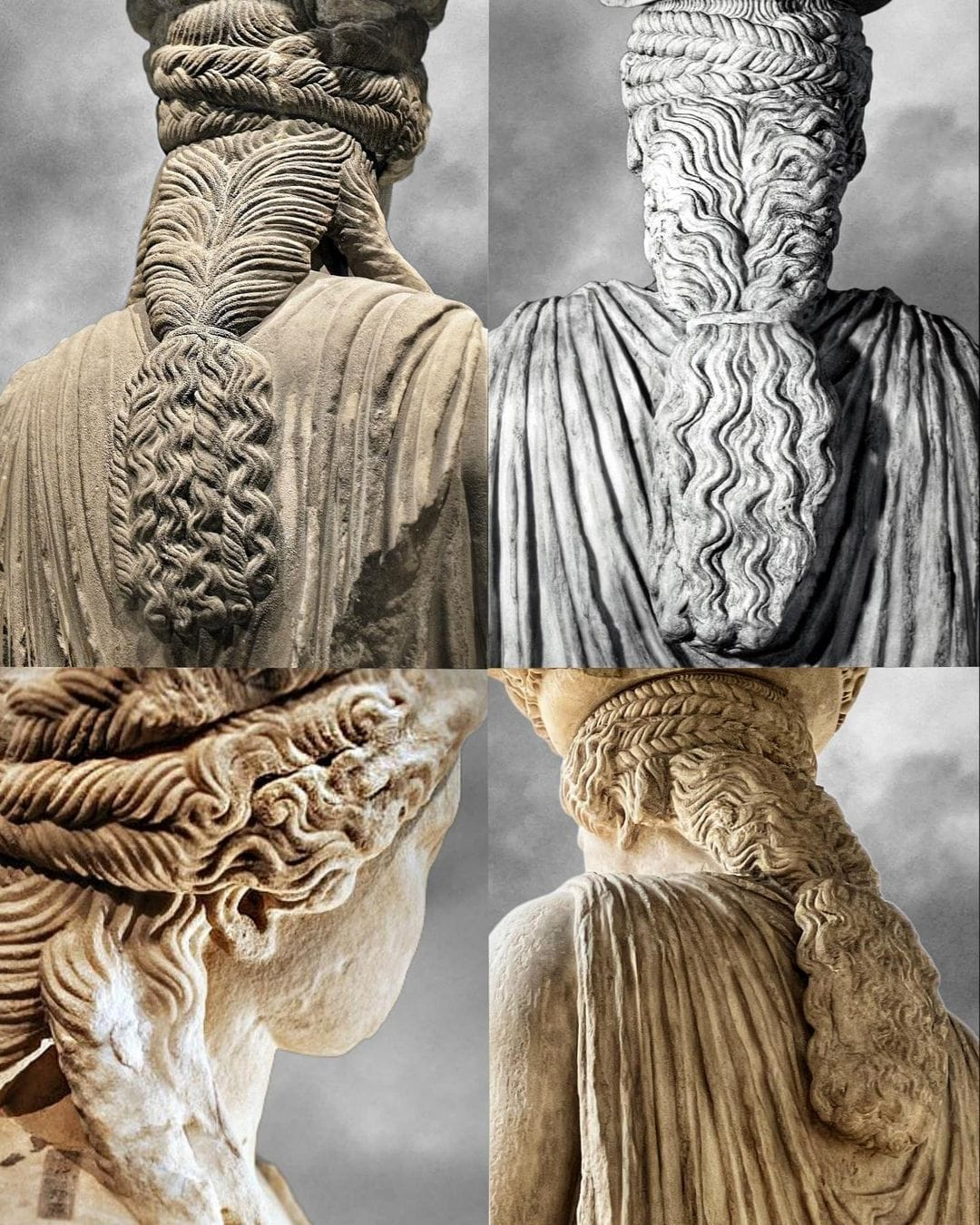

Which of the six Caryatids braided her hair the fastest? Did they use tools for hair curling? Normally, research in archaeology does not involve practical research in a hair salon. But in the case of Katherine Schwab, expert in Greek and Roman art and archaeology and Professor of Visual and Performing Arts at Fairfield University in Connecticut, it did.
Ten years ago, while observing the Caryatids, she noticed something beyond their classical beauty, their graceful poses and their unique characteristics: their hairstyles! “Could we recreate these?” she asked an experienced hair stylist, pointing at photos of the 2,500-year-old marble sculptured fishtail braids on the six famous maidens, who, for centuries stood in place of columns on the south porch of the Erechtheion on the Acropolis.



Talking to me now, the professor explains that “this question led to an example of experimental archaeology.” She is referring to “The Caryatid Hairstyling Project,” first presented in 2009 and since then the subject of a documentary film screened at universities, museums, galleries and archaeological film festivals around the world.
When was the first time you noticed that the Caryatids have interesting hairstyles?
In 2007, Fairfield University hosted the world premiere of the exhibition “The Creative Photograph in Archaeology,” organized by the Benaki Museum in Athens, which included several photographs of the Caryatids. I looked very closely at the photographs by the German photographer Gösta Hellner. The complexity of the braids and even the presence of the braids themselves were surprising, and I realized, too, that no two hairstyles were exactly alike. Each Caryatid or Kore did, however, have a thick fishtail braid. Currently, the fishtail is one of the most fashionable braids, and it always makes me wonder if people wearing it today understand its history or know that it is also worn by the Caryatids of the Athenian Acropolis,carved nearly 2,500 years ago.
The hairstyles I was looking at were remarkably well-preserved; this is, in part, due to the Erechtheion’s south porch roofing, which afforded protection from the effects of air pollution and general weathering. The photographs by Hellner revealed crisp detail. As I looked at them, I wondered if we could recreate these ancient hairstyles.
I contacted Milexy Torres, a very talented and experienced hair stylist in my town. I showed her the photographs and she said she knew exactly what was going on and how these hairstyles were created. In Athens the Archivist at the American School of Classical Studies at Athens (my research affiliation in Greece) brought to my attention a stunning photograph that has to date prior to 1907. The hairstyles of Kore A and Kore B in backview were in excellent condition with exquisite carving still quite visible.
What is the most amazing thing you found out about hair in the classical world?
Among the most remarkable things we discovered during this project is that hair really has significance. Hair can symbolize rites of passage, personal identity, status, cultural identity and much more. Research on these ancient hairstyles can lead in many directions and result in a wealth of information about the role hair did, and does, play in societies. The hairstyles worn by the ancient Caryatids, for instance, are unusual and seem to belong to an earlier tradition. This is probably why they would have been worn only for very special occasions. In part, these hairstyles linked these maidens to past traditions within Athenian society, forming a bridge across time and generations.
The entire project revealed how something such as hair can serve as a portal to a time and place that seems remote, and can bring an ancient era to life. Students who have seen the film are consistently surprised and excited by how this vehicle, if you will, can stimulate their curiosity and their desire to learn more about a culture and society. In this case, a unique hairstyle is the springboard, but one can use many other topics as well.
Did our Greek ancestors use hair extensions?
Such evidence has not been documented, to my knowledge. In contrast, extensions or braids have been found in Roman burials. In the case of the Caryatids, we need to keep in mind that the statues themselves are well over life-size and their function as columns supporting the roof requires a thickness at the neck (and therefore at the fishtail braid) to support the capital above their heads and the roof. If we were to scale down the figures to average female height, I think that the amount of hair becomes more understandable and naturally attainable. The Caryatids wear the fishtail braid down the back, two or three corkscrew curls from behind the ear resting on their chests, plus braids that wrap around their head to create a transition from the head to the capital directly above. It is this last set of braids that makes us wonder about








